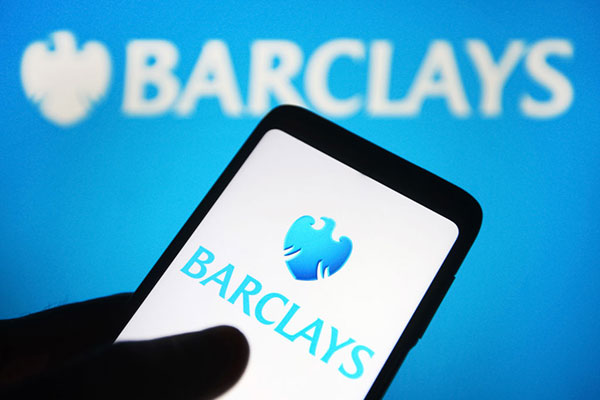Barclays disappoints amid significant headwinds
15th February 2023 08:52
by Richard Hunter from interactive investor
Our head of markets examines the update from the FTSE 100 bank and its announcement of a further share buyback programme.

Barclays (LSE:BARC) has been pulling the many levers under its control to lessen the impacts of further credit impairments and another year of heightened litigation and conduct costs.
Together, these had a material impact. The additional loan loss provisions of the final quarter brought the annual number to £1.2 billion, which compares to a release of £653 million the previous year. Adding to this near £2 billion swing in fortunes was a litigation and conduct charge of £1.6 billion, compared to £397 million, and of which the over-issuance of securities in the US accounted for almost £1 billion.
- Invest with ii: Share Dealing with ii | Open a Stocks & Shares ISA | Our Investment Accounts
With these headwinds in place, it is perhaps of little surprise that pre-tax profit of £7 billion is down 14% year-on-year from £8.2 billion. Even so, the miss of £1.2 billion once more highlights the benefits of diversification whereby Barclays can draw from growth elsewhere. Indeed, the revenue line posted an increase of 14% to stand at £25 billion. Propelling this figure was income growth of 8% from its Corporate & Investment Bank, 35% from its Consumer, Cards & Payments unit and 11% from Barclays UK. In addition, the strength of the US dollar against sterling had a positive impact on income and profits in currency translation, even if some of this was offset by additional operating expenses.
The CIB income growth was driven by a record year for Fixed Income and Global Markets trading, and came despite a decline in investment banking fees. CC&P saw the benefits of higher US card balances, while Barclays UK was primarily boosted by a rising interest rate environment which increased margins. At the same time, the move towards digitisation continues apace – Barclays now has more than 10.5 million users of its mobile app, which inevitably brings cost efficiencies, not least of which in a lessening need to maintain a sprawling branch network.
For the most part, the key metrics remain well under control. An unchanged cost/income ratio of 67% is still higher than the bank would like, and a target of a low 60s hit is in sight for this year. Net Interest Margin increased from 2.93% to 3.54% given the tailwind of rising interest rates, while the capital cushion, or CET1 ratio, remains robust at 13.9%. Elsewhere, the Liquidity Coverage Ratio continues to be awash with excess capital, standing at 165%, and the overall Return on tangible Equity figure of 10.4% is in line with the bank’s target, if a little down from the previous number of 13.1%.
- UK bank sector dividends: what to expect from the Big Five
- Stockwatch: a small-cap with a gravity-defying outlook
- Explore more of our content on UK shares
Such balance sheet strength has also resulted in more shareholder returns. The announcement of a further share buyback programme of £500 million may actually bring some disappointment against an expected number of £675 million, but nonetheless the figure is significant and Barclays has very much left the door open for further purchases. At the same time, an increase to the final dividend brings the projected yield to 3.9%, which remains attractive given the current interest rate backdrop, and the bank remains committed to a progressive growth policy.
The group’s outlook comments seem prudent if unchallenging. Progress for the current year will include further targeting of the cost/income ratio, return on capital, Net Interest Margin and shareholder returns, while there is also the likelihood of further impairments in what could be a deteriorating economic environment on both sides of the pond, as inflationary pressures continue to bear down on consumers and companies alike.
In the meantime, a more recent spike of 19% in the share price over the last three months could indicate changing fortunes for the bank, with some of the hits which it has had to take now moving towards the rear view mirror. However, over the last year the shares are down by 4%, as compared to a gain of 4.5% for the wider FTSE 100, and the near-profit misses against expectations in the fourth quarter may weigh on immediate prospects, as reflected by a weak opening price in early exchanges. Nonetheless, there is little doubting either the financial strength or the breadth of income streams which the bank has at its disposal, and the market consensus of the shares as a buy will likely remain intact as investors look through the current challenges to the prospects of tomorrow.
These articles are provided for information purposes only. Occasionally, an opinion about whether to buy or sell a specific investment may be provided by third parties. The content is not intended to be a personal recommendation to buy or sell any financial instrument or product, or to adopt any investment strategy as it is not provided based on an assessment of your investing knowledge and experience, your financial situation or your investment objectives. The value of your investments, and the income derived from them, may go down as well as up. You may not get back all the money that you invest. The investments referred to in this article may not be suitable for all investors, and if in doubt, an investor should seek advice from a qualified investment adviser.
Full performance can be found on the company or index summary page on the interactive investor website. Simply click on the company's or index name highlighted in the article.